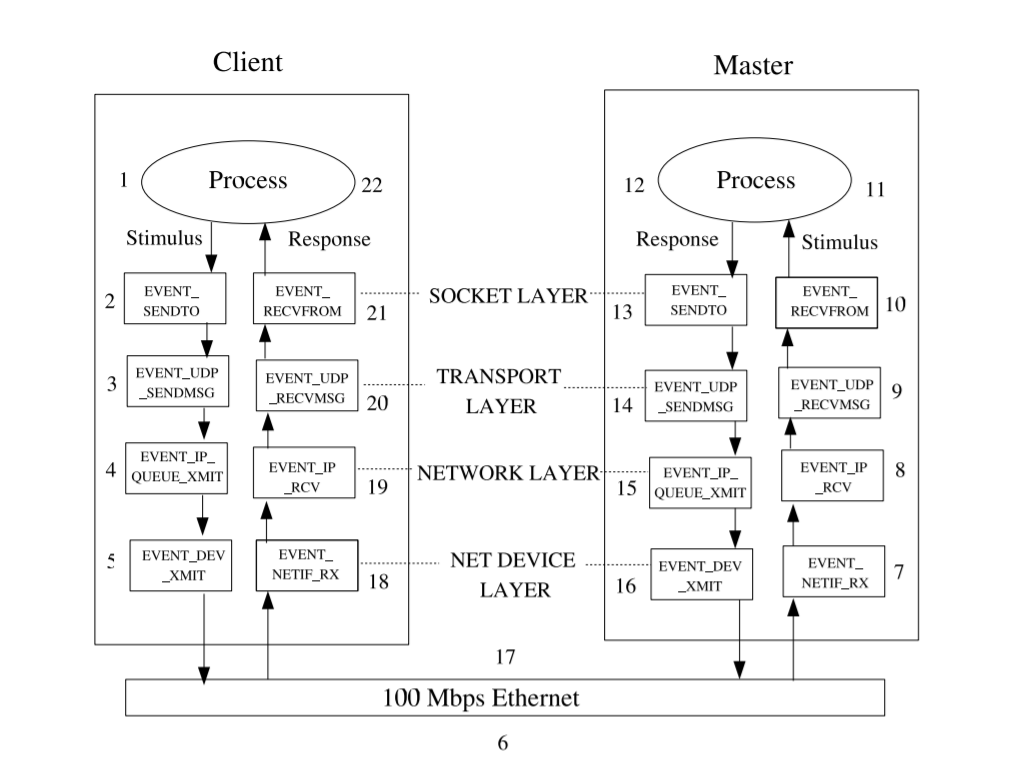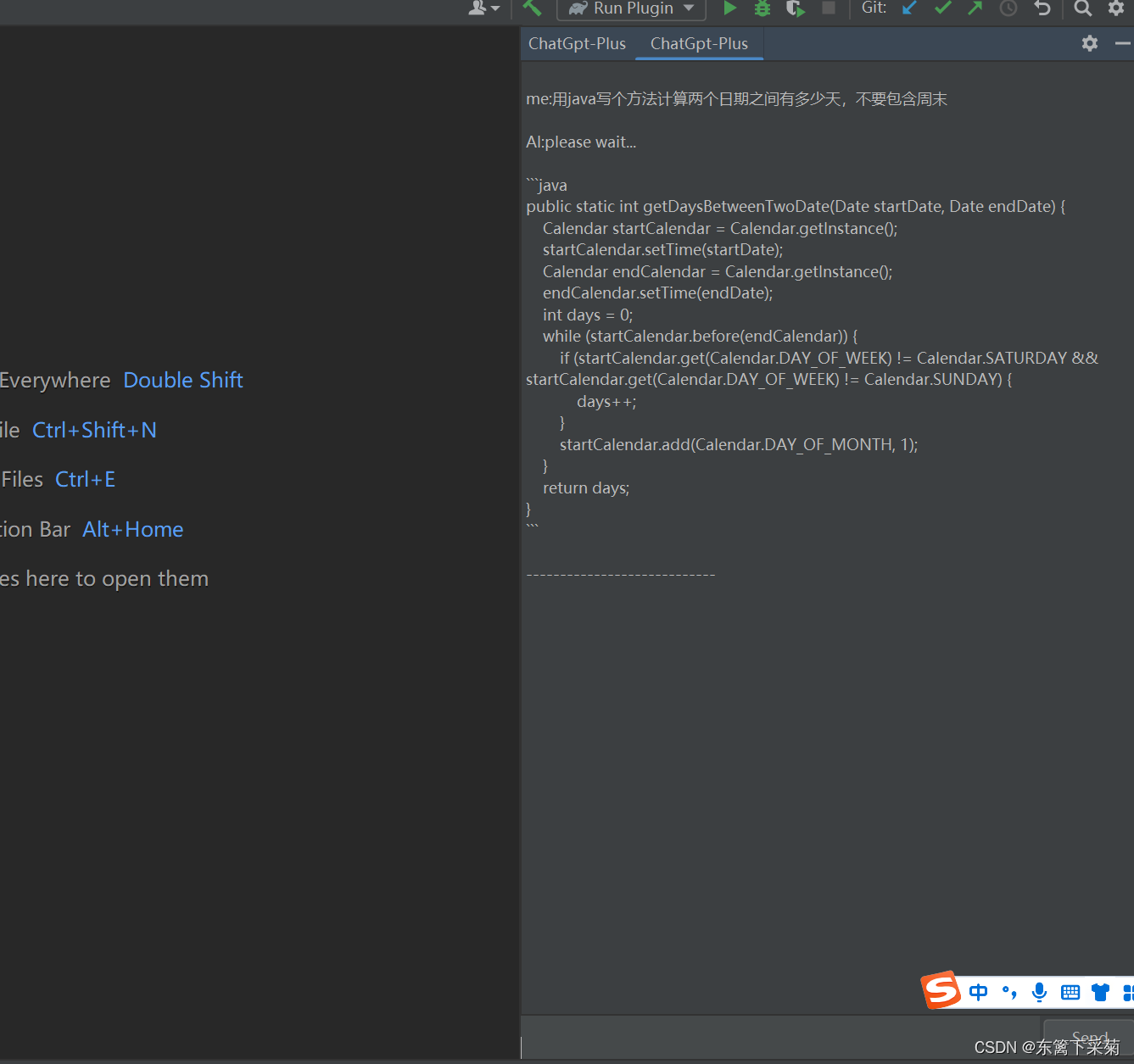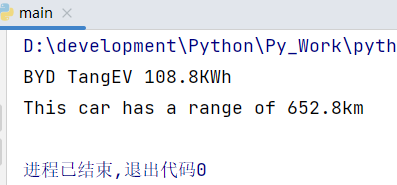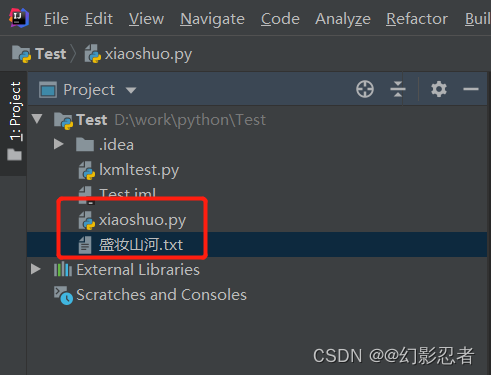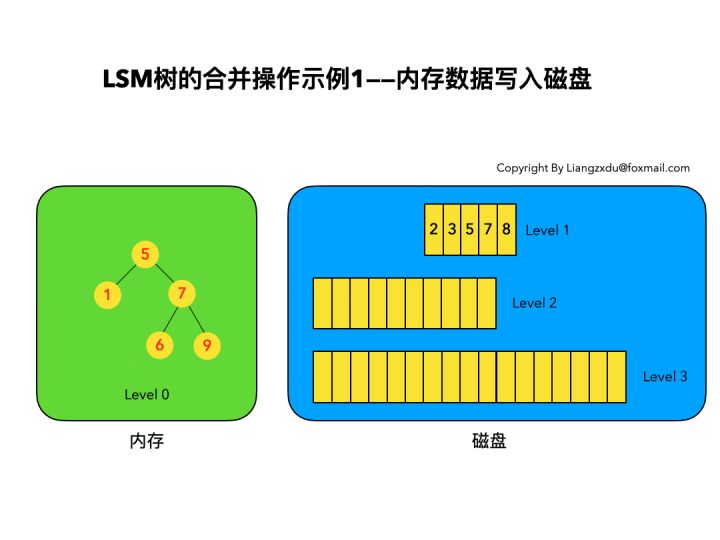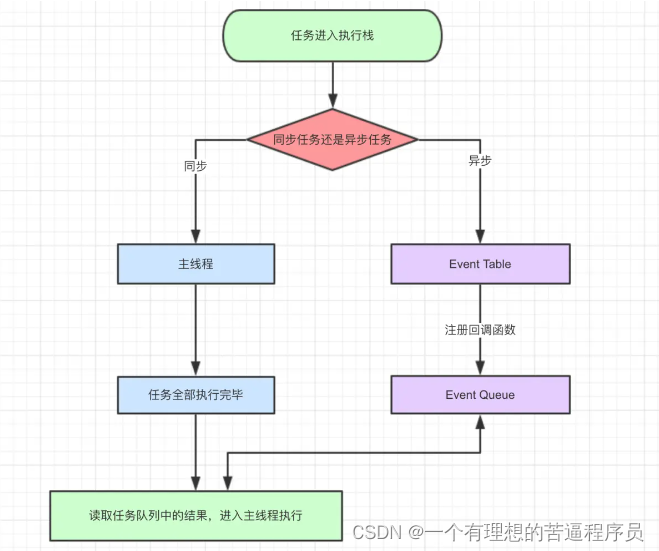1.标准库的string类
- string是表示字符串的字符串类
- 在使用string类时,必须包含#include头文件以及using namespace std;
- string类是使用char(即作为它的字符类型,使用它的默认char_traits和分配器类型(关于模板的更多信息,请参阅basic_string)。
2.使用
1°四个默认成员函数
构造 析构 拷贝构造 赋值
void test_string1()
{
string s1;//构造和析构 //ok
string s2("hello");//字符串构造 //ok
string s3("hello", 2);//拷贝前两个字符进行初始化
string s4(s2);//拷贝构造 //ok
string s5(s2, 1, 2);//从下标为1的位置开始拷贝两个字符
string s6(s2, 1, string::npos);//或者想取8个 不会报错 一直拷贝完
string s7(10, 'a');//10个a
cout << s1 << endl;
cout << s2 << endl;
cout << s3 << endl;
cout << s4 << endl;
cout << s5 << endl;
cout << s6 << endl;
cout << s7 << endl;
s1 = s7;//赋值 //ok
cout << s1 << endl;
}
2°遍历+字符串拼接
-
operator[ ] [ ]里面为下标(类似于数组访问)
-
迭代器
-
范围for
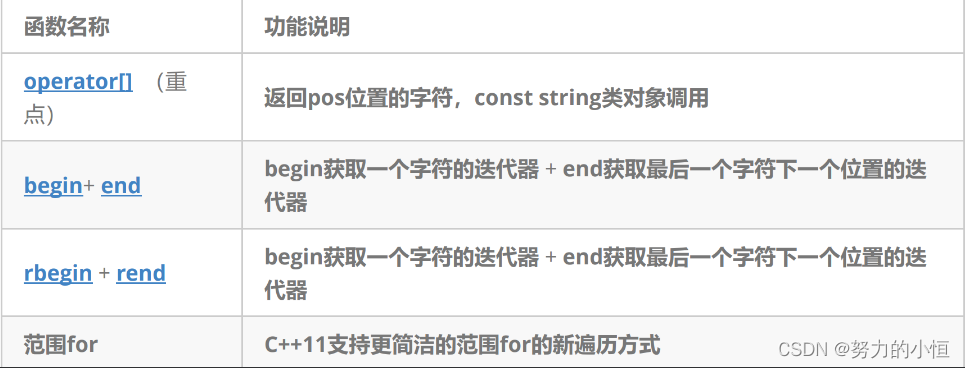
void test_string2()
{
string s1("hello");
s1 += ' ';
s1 += "world";
cout << s1 << endl;
//改 operator[] size []+下标
for (size_t i = 0; i < s1.size(); ++i)
{
s1[i] += 1;
}
//读 operator[] size
for (size_t i = 0; i < s1.size(); ++i)
{
cout << s1[i] << " ";
}
cout << endl;
//迭代器
//写
//string::iterator it = s1.begin();
auto it = s1.begin();//auto也可
while (it != s1.end())
{
*it -= 1;
++it;
}
//读
it = s1.begin();
while (it != s1.end())
{
cout << *it << " ";
++it;
}
cout << endl;
//1.迭代器不一定是指针 像指针一样的东西
//2.end是最后一个字符的下一个位置
vector<int> v;
v.push_back(1);
v.push_back(2);
v.push_back(3);
vector<int>::iterator vit = v.begin();
while (vit != v.end())
{
cout << *vit << " ";
++vit;
}
cout << endl;
//范围for
//C++11
for (auto ch : s1)
{
cout << ch << " ";
}
cout << endl;
}
3°迭代器
正向:begin->end
反向:rbegin->rend
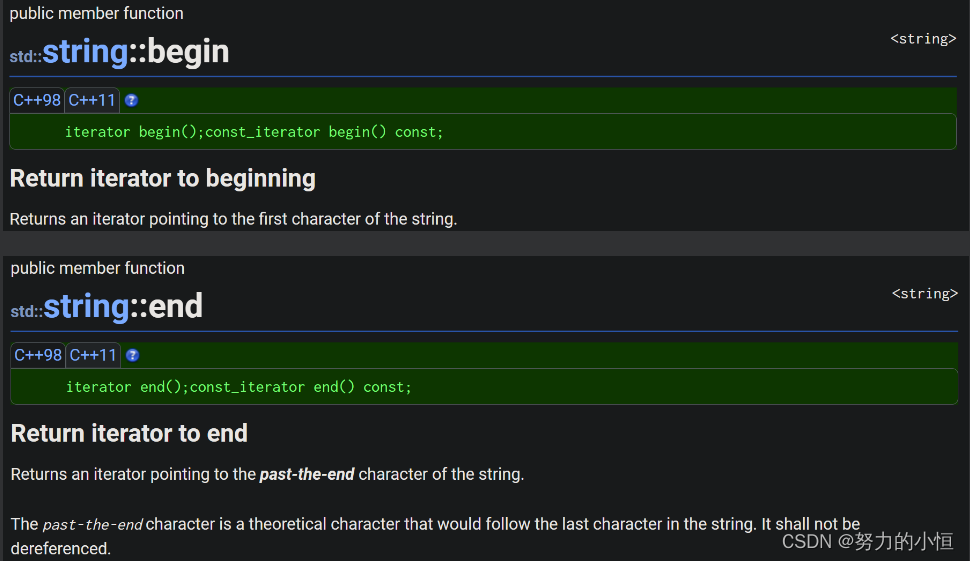
int string2int(const string& str)//2->to
{
int val = 0;
//const迭代器 只能读 不能写
string::const_iterator it = str.begin();//定义的时候要是const迭代器
while (it != str.end())
{
val *= 10;
val += (*it - '0');
++it;
}
//const反向
//string::const_reverse_iterator rit = str.rbegin();//定义的时候要是const迭代器
auto rit = str.rbegin();
while (rit != str.rend())
{
val *= 10;
val += (*rit - '0');
++rit;
}
return val;
}
//3.再看看其他迭代器
//方向:正向和反向
//属性:普通和const
//感觉迭代器很难受
//长远看vector list map set deque 全部可以迭代器 很舒服
void test_string3()
{
string s1("hello world");
//倒着遍历? 反向迭代器
string::reverse_iterator rit = s1.rbegin();
while (rit != s1.rend())
{
cout << *rit << " ";
++rit;
}
cout << endl;
//返回整形
string nums("12345");
cout << string2int(nums) << endl;
}
4°容量操作
string类对象的容量操作
size 返回字符串有效字符长度
length 返回字符串有效字符长度
capacity 返回空间总大小
empty 检测字符串释放为空串,是返回true,否则返回false
clear 清空有效字符
reserve 为字符串预留空间
resize 将有效字符的个数该成n个,多出的空间用字符c填充
//4.length size capacity
void test_string4()
{
string s1("hello world");
string s2("hello");
cout << s1.size() << endl;
cout << s2.size() << endl;
cout << s1.length() << endl;
cout << s2.length() << endl;
//max_size()没有啥意义
cout << s1.max_size() << endl;
cout << s2.max_size() << endl;
//capacity 增容的空间
cout << s1.capacity() << endl;
cout << s2.capacity() << endl;
s1 += "111111";
cout << s1.capacity() << endl;//基本是按倍数增加的
//clear
s1.clear();
cout << s1 << endl;
//size减到0了 但空间没有
cout << s1.capacity() << endl;
}
//5.reverse resize
void test_string5()
{
//string s;
//s.reserve(100);//直接开够空间
//s.resize(100, 'x');//x给不给都可以 resize的size也到了100
//size_t sz = s.capacity();
//cout << "making s grow:\n";
//for (int i = 0; i < 100; ++i)
//{
// s.push_back('c');
// if (sz != s.capacity())
// {
// //1.5倍扩容
// sz = s.capacity();
// cout << "capacity changed" << sz << '\n';
// }
//}
string s("hello world");
s.resize(5);
s.resize(20, 'x');//前5个是hello 后15个补15个x
//reverse开空间
//resize开空间+填数据
cout << s << endl;
}
5°增删查改
- push_back 尾插
- 也可以换成+=
- insert 插入
- erase 删除
void test_string6()
{
//string s;
//s.push_back('x');
//s.append("111111");
推荐+=
//s += 'x';
//s += "xxxxxx";
//cout << s << endl;
string s;
s += '1';
s += "3456";
cout << s << endl;
s.insert(s.begin(), '0');//头插 迭代器+字符
cout << s << endl;
s.insert(2, "2");//2看成下标
cout << s << endl;
s.erase(2, 3);//2的位置开始删除3个字符 如果是10 会一直删完 不会报错
cout << s << endl;
}
void test_string7()
{
string s1("hello");
s1 += ' ';
s1 += "world";
cout << s1 << endl;
//遍历每一个字符
//1.for
for (size_t i = 0; i < s1.size(); ++i)
{
cout << s1[i] << " ";
}
cout << endl;
//2.迭代器
string::iterator it1 = s1.begin();
while (it1 != s1.end())
{
cout << *it1 << " ";
++it1;
}
cout << endl;
//3.范围for
for (auto e : s1)
{
cout << e << " ";
}
cout << endl;
//4.获取字符数组首地址 用C字符串的形式遍历
const char* str = s1.c_str();
while (*str)
{
cout << *str << " ";
++str;
}
cout << endl;
cout << s1 << endl;//调用string重载的operator<< 将对象数组中的所有字符都输出
cout << s1.c_str() << endl;//直接输出const char* 遇到\0就结束
//不一样的地方
s1 += '\0';
s1 += "world";
cout << s1 << endl;
cout << s1.c_str() << endl;//遇到‘\0’就停了
char str1[] = "中国";
cout << str1 << endl;
str1[3] = -7;
cout << str1 << endl;
str1[3] = -8;
cout << str1 << endl;
str1[3] = -9;
cout << str1 << endl;
}
6°取后缀名
void split_url(const string& url)//取别名 利用别名操作 如果想换网址 传参改变即可
{
//取http
size_t i1 = url.find(":");
if (i1 != string::npos)
{
//0-i1
cout << url.substr(0, i1) << endl;
}
//取中间部分
size_t i2 = url.find('/', i1 + 3);//从i1+3开始找/
if (i2 != string::npos)
{
//i2-(i1+3)就是结束位置
cout << url.substr(i1 + 3, i2 - i1 - 3) << endl;
}
//取第三段 就直接从i2+1开始 不用设置结束
cout << url.substr(i2 + 1) << endl;
}
void test_string8()
{
//如何取后缀名
string s1("string.cpp");
string s2("string.c");
string s3("string.txt");
size_t pos1 = s1.find('.');//先拿到点的位置
if (pos1 != string::npos)//npos是这个字符串的结束位置
{
cout << s1.substr(pos1) << endl;//子串打印
}
size_t pos2 = s2.find('.');
if (pos2 != string::npos)
{
cout << s2.substr(pos2) << endl;
}
size_t pos3 = s3.find('.');
if (pos3 != string::npos)
{
cout << s3.substr(pos3) << endl;
}
//怎么拿到.zip
string s4("string.cpp.zip");
//rfind倒着找
size_t pos4 = s4.rfind('.');
if (pos4 != string::npos)
{
cout << s4.substr(pos4) << endl;
}
//如何取出网址三部分?
//协议 域名 资源名称
string cppurl("https://cplusplus.com/reference/");
string nowcodernul("https://www.nowcoder.com/exam/company");
//http ip DNS 查ip
split_url(cppurl);
split_url(nowcodernul);
}
7°非成员函数
operator+ 尽量少用,因为传值返回,导致深拷贝效率低 operator>> 输入运算符重载 operator<< 输出运算符重载 getline 获取一行字符串 relational operators 大小比较
void test_string9()
{
string s1("hello");
string ret1 = s1 + "world";//s1不变
cout << s1 << endl;
cout << ret1 << endl;
string ret2 = s1 += "world";//s1变
cout << s1 << endl;
cout << ret2 << endl;
string s2("abcd");
string s3("bbcd");
//三种比较
cout << (s2 < s3) << endl;
cout << (s2 < "bbcd") << endl;
cout << ("abcd" < "bbcd") << endl;
}
3.简单string类
面试题:实现一个简单的string类
也就是要实现 构造 析构 赋值 拷贝构造 operator[ ] size等
1°构造
namespace s
{
class string
{
public:
string(const char* str = "")//不能给空
:_str(new char[strlen(str)+1])//str错的 //string对象中存储指针 指针指向的数组中存储字符 字符最后必须保留\0
{
strcpy(_str, str);//字符串拷贝 拷过来 初始化
}
private:
char* _str;
};
}
- 为什么不能直接_str(str)初始化?
假设string s1("hello");
此时s1在栈上 初始化字符串在代码段上 不可以修改 那么增删等功能无法实现 因此要new出空间来保证增删等功能的实现
- 为什么缺省参数不能给空?
后续的strcpy会有指针的使用 空指针使用会导致程序崩溃
2°析构
namespace s
{
class string
{
public:
~string()
{
delete[] _str;
}
private:
char* _str;
};
}
直接使用delete[ ] 清除_str
3°拷贝构造
namespace s
{
class string
{
public:
string(const string& s)
:_str(new char[strlen(s._str)+1])//开空间
{
strcpy(_str,s._str);//开空间再拷贝
}
private:
char* _str;
};
}
拷贝构造与构造类似 只是需要一个被拷贝的对象s 通过s.来访问_str
- 如果不自己实现拷贝构造 而是用编译器的拷贝构造 会有什么问题?
比如说 string s1("hello"); string s2(s1);
s2拷贝s1的hello
看上去没什么问题
但是构造完以后 会自动调用析构函数
编译器默认的拷贝构造是浅拷贝 也就是说两个hello的地址是一样的
此时会将这块空间释放两次 导致程序崩溃
因此解决这个问题 我们必须有自己写一个拷贝构造 完成深拷贝
此时两个hello所处的空间不同 不会造成同一块空间释放两次的问题
为什么同一块空间释放两次就有问题?
第一次释放完之后把这块空间还给了系统
第二次再释放 不可能将系统自带的空间释放 因此程序崩溃
4°赋值
namespace s
{
class string
{
public:
string& operator=(const string& s)
{
if (this != &s)//地址不同 防止自己赋值自己
{
char* tmp = new char[strlen(s._str) + 1];//跟s3开一样大的空间
strcpy(tmp, s._str);//拷贝到新空间
delete[] _str;//释放s1的旧空间
_str = tmp;//新空间拿过来
}
return *this;
//出作用域*this不在 加上引用 //返回是为了支持连=
}
private:
char* _str;
};
}
赋值的过程:
比如说s1=s3
s就看成s3 本来要传两个参数的 但是编译器隐藏了this指针 只用传一个
首先s1要开跟s3一样大的空间
再把s3的数据拷贝到s1的新空间
s1的旧空间释放
s1的指针对象指向新空间(原来是指向旧空间的)
最后返回s1 也就是隐藏的*this
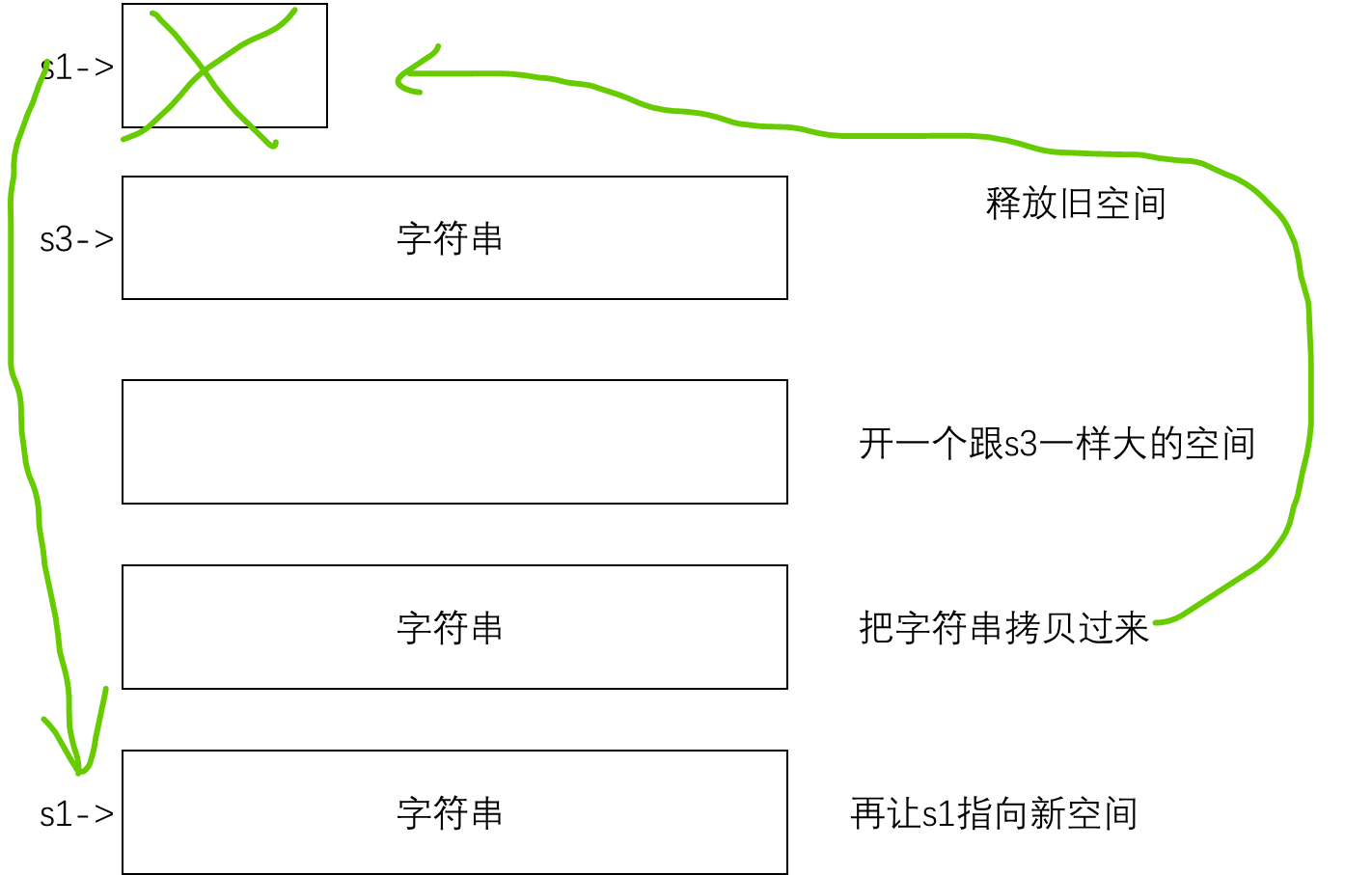
如果不自己实现赋值 那么也会是浅拷贝 与拷贝构造问题一样
5°size
namespace s
{
class string
{
public:
size_t size()
{
return strlen(_str);
}
private:
char* _str;
};
}
6°[]重载
namespace s
{
class string
{
public:
char& operator[](size_t i)
{
return _str[i];
}
private:
char* _str;
};
}
4.完整string类
简单string类+增删查改等(顺序表)
1°默认成员函数(有现代写法)
namespace szh
{
class string
{
public:
//string s2("hello")
string(const char* str = "")
{
_size = strlen(str);
_capacity = _size;
_str = new char[_capacity + 1];//有一个是\0
strcpy(_str, str);
}
//拷贝构造的现代写法
//string s2(s1)
string(const string& s)
:_str(nullptr)
, _size(0)
, _capacity(0)
{
string tmp(s._str);
//this->swap(tmp);//s2跟s1换 this和tmp换 this调用成员函数swap
swap(tmp);
}
void swap(string& s)
{
::swap(_str, s._str);
::swap(_size, s._size);
::swap(_capacity, s._capacity);
//::swap是库里面的
}
//s1 = s3
string& operator=(string s)
{
//this->swap(s);
swap(s);
return *this;//s3给到s1 s给到this 交换
}
~string()
{
delete[] _str;
_str = nullptr;
_size = _capacity = 0;
}
private:
char* _str;
size_t _size; //已经有多少个有效字符
size_t _capacity;//能存多少个有效字符 \0不是有效字符
static size_t npos;
};
}
现代写法:
拷贝构造和赋值 是把即将被拷贝和被赋值的字符串与拷贝和赋值的字符串进行交换
_size _capacity与顺序表一致
2°size
namespace szh
{
class string
{
public:
size_t size() const//可传const对象
{
return _size;
}
private:
char* _str;
size_t _size; //已经有多少个有效字符
size_t _capacity;//能存多少个有效字符 \0不是有效字符
static size_t npos;
};
}
3°capacity
namespace szh
{
class string
{
public:
size_t capacity() const//可传const对象
{
return _capacity;
}
private:
char* _str;
size_t _size; //已经有多少个有效字符
size_t _capacity;//能存多少个有效字符 \0不是有效字符
static size_t npos;
};
}
4°operator[]
namespace szh
{
class string
{
public:
char& operator[](size_t i)
{
assert(i < _size);
return _str[i];
}
char& operator[](size_t i) const//解决const对象访问
{
assert(i < _size);
return _str[i];
}
private:
char* _str;
size_t _size; //已经有多少个有效字符
size_t _capacity;//能存多少个有效字符 \0不是有效字符
static size_t npos;
};
}
5°c_str
namespace szh
{
class string
{
public:
const char* c_str()
{
return _str;
}
private:
char* _str;
size_t _size; //已经有多少个有效字符
size_t _capacity;//能存多少个有效字符 \0不是有效字符
static size_t npos;
};
}
以c语言的形式输出字符串
6°reverse
增容到n个空间
namespace szh
{
class string
{
public:
void reserve(size_t n)
{
if (n > _capacity)
{
char* newstr = new char[n + 1];//多开一个空间给到\0
strcpy(newstr, _str);//字符串和空间全部保留 释放后指向新空间
delete[] _str;
_str = newstr;
_capacity = n;
}
}
private:
char* _str;
size_t _size; //已经有多少个有效字符
size_t _capacity;//能存多少个有效字符 \0不是有效字符
static size_t npos;
};
}
与赋值函数步骤相同
开n+1个新空间
拷贝字符串
删除旧空间
指向新空间
capacity变为n
7°push_back
namespace szh
{
class string
{
public:
void push_back(char ch)
{
//空间满了则进行增容
if (_size == _capacity)
{
size_t newcapacity = _capacity == 0 ? 2 : _capacity * 2;
reserve(newcapacity);
}
_str[_size] = ch;
++_size;
_str[_size] = '\0';//添加一个字符时 \0会被替换掉 因此要再加上\0
}
private:
char* _str;
size_t _size; //已经有多少个有效字符
size_t _capacity;//能存多少个有效字符 \0不是有效字符
static size_t npos;
};
}
与顺序表的尾插相同 先检查需不需要扩容 再把字符放到尾部 size++ 注意此时\0已经被
替换了 所以最后再补上一个\0
8°append
namespace szh
{
class string
{
public:
void append(const char* str)
{
//空间不够就扩容
//strcat必须在空间够的情况下
size_t len = strlen(str);
//len为追加字符串长度 判断是否需要扩容
if (_size + len > _capacity)//为什么不能2倍 可能不够
{
reserve(_size + len);
}
strcpy(_str + _size, str);//直接追加
_size += len;//插入了len的字符
}
private:
char* _str;
size_t _size; //已经有多少个有效字符
size_t _capacity;//能存多少个有效字符 \0不是有效字符
static size_t npos;
};
}
追加字符串
注意:不能使用strcat strcat必须在空间够的情况下
先判断追加后需不需要扩容
再用strcpy进行拷贝 直接从后面位置开始拷贝 相当于就是追加
_size+=len需要调整
9°operator+=
可替代push_back和append进行字符串的拼接
内部调用push_back和append的接口
namespace szh
{
class string
{
public:
string& operator+=(char ch)
{
this->push_back(ch);
return *this;
}
string& operator+=(const char* str)
{
this->append(str);
return *this;
}
private:
char* _str;
size_t _size; //已经有多少个有效字符
size_t _capacity;//能存多少个有效字符 \0不是有效字符
static size_t npos;
};
}
返回push_back和append后的字符串 也就是隐藏的*this
10°insert
namespace szh
{
class string
{
public:
void insert(size_t pos, char ch)
{
assert(pos <= _size);//插入在范围之内
if (_size == _capacity)
{
size_t newcapacity = _capacity == 0 ? 2 : _capacity * 2;
reserve(newcapacity);
}
int end = _size;
while (end >= (int)pos)
{
_str[end + 1] = _str[end];
end--;
}
_str[pos] = ch;
++_size;
}
string& insert(size_t pos, const char* str)
{
assert(pos <= _size);
size_t len = strlen(str);
if (_size + len > _capacity)
{
int newcapacity = _size + len;
reserve(newcapacity);
}
int end = _size;
while (end >= (int)pos)//pos等于0的时候 end会转换 -1(无符号)变为最大的数 所以pos要强转一下
{
_str[end + len] = _str[end];
end--;
}
//for (size_t i = 0; i < len; ++i)
//{
// _str[pos++] = _str[i];
//}
strncpy(_str + pos, str, len);//strcpy会把\0挪过来 直接strncpy 把\0排开
_size += len;
return *this; //库里面是要返回自己
}
private:
char* _str;
size_t _size; //已经有多少个有效字符
size_t _capacity;//能存多少个有效字符 \0不是有效字符
static size_t npos;
};
}
顺序表的insert 插入后依次挪动数据
注意字符串的插入时的一些细节 pos为0的时候 end会转换 -1的无符号变为最大数
因此要强转 利用strncpy进行直接的追加 可以直接把\0拷贝过来 STL库里面是返回*this的
11°resize
字符初始化 默认给\0 也可以给字符
三类情况
"hello\0" resize(8) 后面三个添字符 resize(18) 需要先扩容 resize(2) 删
namespace szh
{
class string
{
public:
void resize(size_t n, char ch = '\0')
{
//缩 最后位置放\0 n<_size
if (n < _size)
{
_str[n] = '\0';
_size = n;
}
else
{
//_size < n <= _capacity
//扩 n> _capacity
if (n > _capacity)
{
reserve(n);
}
//添的逻辑一样的 只是需要加扩容情况
for (size_t i = _size; i < n; ++i)//从\0开始添ch
{
_str[i] = ch;
}
_size = n;
_str[_size] = '\0';//添到最后给\0
}
}
private:
char* _str;
size_t _size; //已经有多少个有效字符
size_t _capacity;//能存多少个有效字符 \0不是有效字符
static size_t npos;
};
}
添的时候先检查需不需要扩容
添字符的时候用for循环一个个赋值过来
注意最后需要添\0
12°erase
helloworld\0
如果从w位置开始删 erase(,2) erase(,5) erase(,8) erase(,string::npos)
后三者很轻松 直接删完 pos位置放\0 如果是2的话 就要往前挪数据
namespace szh
{
class string
{
public:
void erase(size_t pos, size_t len)
{
assert(pos < _size);
if (len >= _size - pos)
{
_str[pos] = '\0';
_size = pos;
}
else
{
size_t i = pos + len;//r的位置往前挪
while (i <= _size)
{
_str[i - len] = _str[i];
++i;
}
_size -= len;
}
}
private:
char* _str;
size_t _size; //已经有多少个有效字符
size_t _capacity;//能存多少个有效字符 \0不是有效字符
static size_t npos;
};
}
13°find
namespace szh
{
class string
{
public:
size_t find(char ch, size_t pos = 0)//有多个需要找的 给位置
{
for (size_t i = pos; i < _size; ++i)
{
if (_str[i] == ch)
{
return i;
}
}
}
size_t find(const char* str, size_t pos = 0)//查字符串
{
char* p = strstr(_str, str);//找子串 在_str中找str
if (p == nullptr)
{
return npos;//没有找到
}
else
{
return p - _str;//指针相减 就是下标
}
}
private:
char* _str;
size_t _size; //已经有多少个有效字符
size_t _capacity;//能存多少个有效字符 \0不是有效字符
static size_t npos;
};
}
14°operator操作
namespace szh
{
class string
{
public:
bool operator<(const string& s)
{
int ret = strcmp(_str, s._str);
return ret < 0;
}
bool operator==(const string& s)
{
int ret = strcmp(_str, s._str);
return ret == 0;
}
bool operator<=(const string& s)
{
return *this < s || *this == s;
}
bool operator>(const string& s)
{
return !(*this <= s);
}
bool operator>=(const string& s)
{
return !(*this < s);
}
bool operator!=(const string& s)
{
return !(*this == s);
}
private:
char* _str;
size_t _size; //已经有多少个有效字符
size_t _capacity;//能存多少个有效字符 \0不是有效字符
static size_t npos;
};
}
15°<<和>>重载
namespace szh
{
class string
{
public:
//<<重载 方便遍历
ostream& operator<<(ostream& out, const string& s)
{
for (size_t i = 0; i < s.size(); ++i)
{
cout << s[i];
}
return out;
}
//>>重载 这里空格的话就不行了 写一个getline 去掉空格结束条件即可
istream& operator>>(istream& in, string& s)
{
while (1)
{
char ch;
//in >> ch;//>>这个是编译器实现的 换行或者空格才会往下走 导致下面接收不到
ch = in.get();
if (ch == ' ' || ch == '\n')//遇到空格或者换行
{
break;//输入结束
}
else
{
s += ch;//调用+=
}
}
return in;
}
//getline 遇到换行才停止输入
istream& getline(istream& in, string& s)
{
while (1)
{
char ch;
ch = in.get();
if (ch == '\n')
{
break;
}
else
{
s += ch;
}
}
return in;
}
private:
char* _str;
size_t _size; //已经有多少个有效字符
size_t _capacity;//能存多少个有效字符 \0不是有效字符
static size_t npos;
};
}
16°测试
//构造函数 析构函数 遍历
void test_string1()
{
string s1;
string s2("hello");
cout << s1 << endl;
cout << s2 << endl;
cout << s1.c_str() << endl;
cout << s2.c_str() << endl;
//三种遍历方式
//1.for
for (size_t i = 0; i < s2.size(); ++i)
{
s2[i] += 1;
cout << s2[i] << " ";
}
cout << endl;
//2.迭代器
string::iterator it2 = s2.begin();
while (it2 != s2.end())
{
*it2 -= 1;
cout << *it2 << " ";
++it2;
}
cout << endl;
//3.范围for
//范围for是有迭代器支持的
//也就是说这段代码会被最终替换成迭代器
for (auto e : s2)
{
cout << e << " ";
}
cout << endl;
}
//插入
void test_string2()
{
string s1("hello");
s1.push_back(' ');
s1.push_back('w');
s1.push_back('o');
s1.append("rld xxxxxxxxxxxxxxx");
cout << s1 << endl;
//string s2;//空对象会出问题 \0被替换 不够完善
//s2 += "hello";
//s2 += ' ';
//s2 += "world";
//cout << s2 << endl;
}
//resize
void test_string3()
{
string s1("hello");
s1.insert(1, 'x');
s1.insert(1, "xyz");
cout << s1 << endl;
string s2("hello");
s2.reserve(10);
cout << s2 << endl;
cout << s2.size() << endl;
cout << s2.capacity() << endl;
s2.resize(8, 'x');
cout << s2 << endl;
cout << s2.size() << endl;
cout << s2.capacity() << endl;
s2.resize(18, 'a');
cout << s2 << endl;
cout << s2.size() << endl;
cout << s2.capacity() << endl;
s2.resize(2);
cout << s2 << endl;
cout << s2.size() << endl;
cout << s2.capacity() << endl;
}
//删 查
void test_string4()
{
string s1("helloworld");
s1.erase(5, 2);
cout << s1 << endl;
s1.erase(5, 4);
cout << s1 << endl;
string s2("abcdabcdef");
cout << s2.find("cde") << endl;
cout << s2.find("cdex") << endl;
}
//输入 输出
void test_string5()
{
string s;
cin >> s;
//getline(cin, s); 遇到空格会接着输出
cout << s;
}
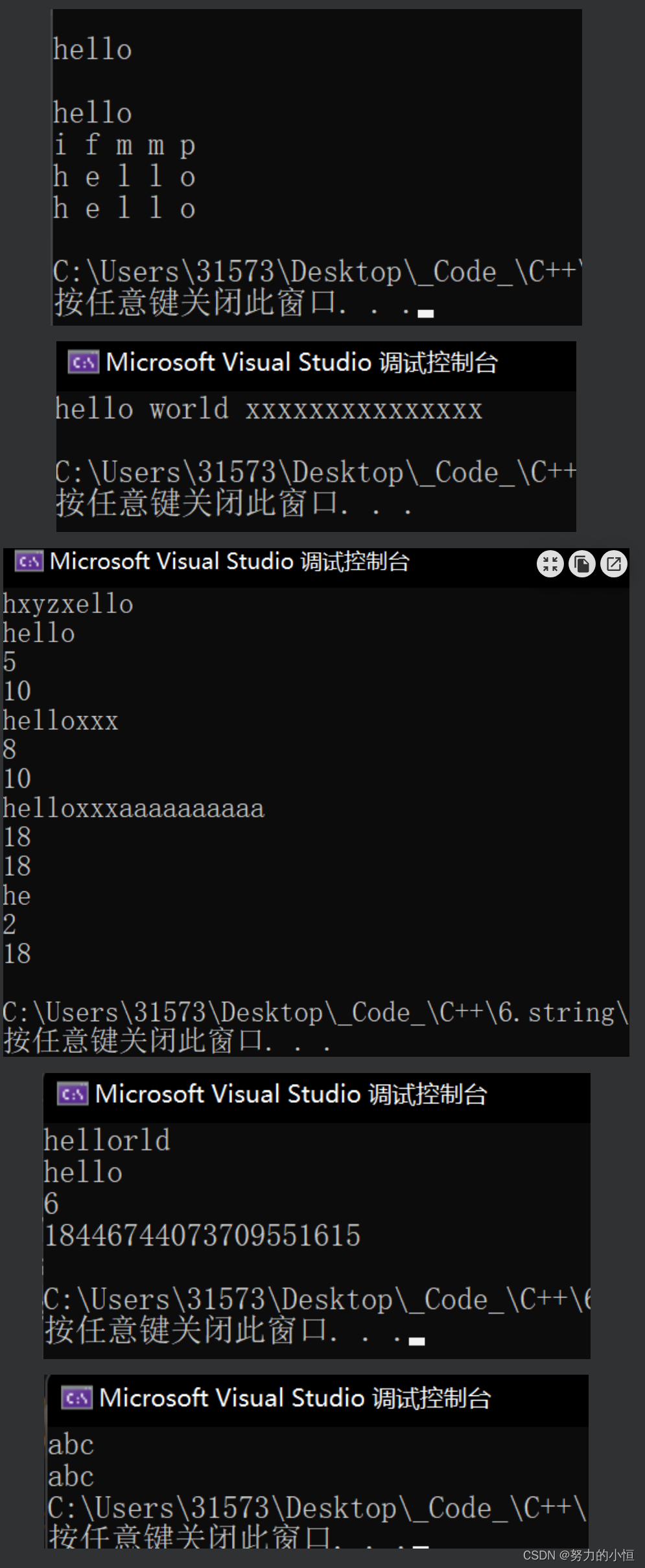
17°copy
namespace copy
{
class string
{
public:
string(const char* str = " ")
:_str(new char[strlen(str) + 1])
{
strcpy(_str, str);
}
~string()
{
delete[] _str;
}
//深拷贝 -传统写法
//string(const string& s)
// :_str(new char[strlen(s._str)+1])
//{
// strcpy(_str, s._str);
//}
//深拷贝 -现代写法 nullptr换已经搞好的
string(const string& s)//如果不制空 随机值与tmp交换 tmp出作用域后析构 程序崩溃
:_str(nullptr)
{
string tmp(s._str); //tmp去调构造 开数据 就是s1
swap(_str, tmp._str);//s2和s1一换 string s2(s1)
}
//赋值传统
//string& operator=(const string& s)
//{
// if (this != &s)
// {
// char* tmp = new char[strlen(s._str) + 1];
// strcpy(tmp, s._str);
// delete[] _str;
// _str = tmp;
// }
// return *this;
//}
赋值现代
//string& operator=(const string& s)
//{
// if (this != &s)
// {
// string tmp(s);
// swap(_str, tmp._str);
// }
// return *this;
//}
//更简单的
string& operator=(string s)//传值
{
swap(_str, s._str);
return *this;
}
size_t size()
{
return strlen(_str);
}
char& operator[](size_t i)
{
return _str[i];
}
private:
char* _str;
};
void test_string1()
{
string s1("hello");
string s2(s1);
for (size_t i = 0; i < s2.size(); ++i)
{
cout << s2[i];
}
cout << endl;
string s3("world");
s1 = s3;
for (size_t i = 0; i < s2.size(); ++i)
{
cout << s1[i];
}
}
}
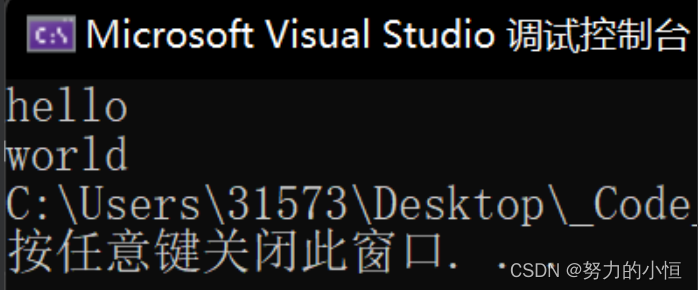
【C++】7.string 完


